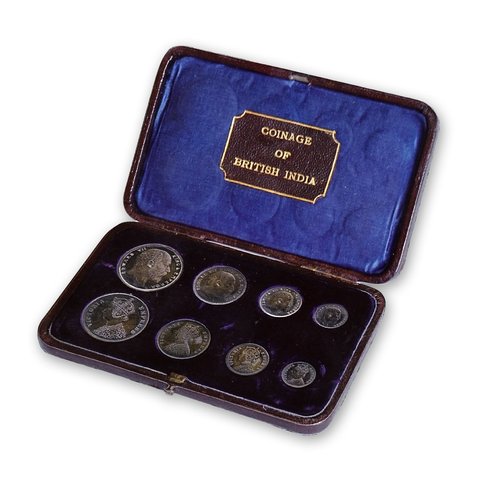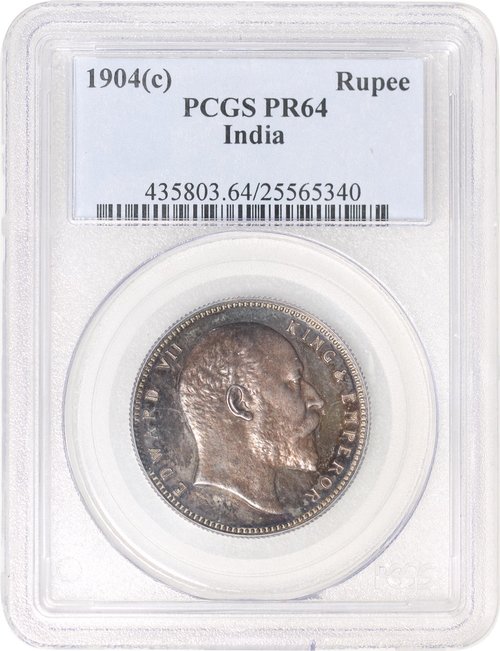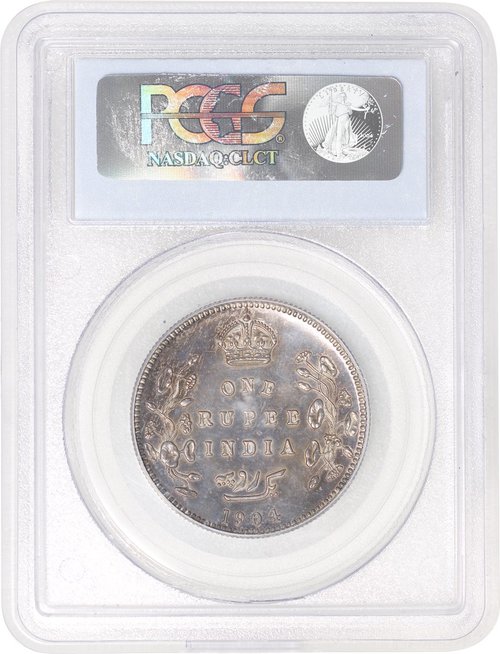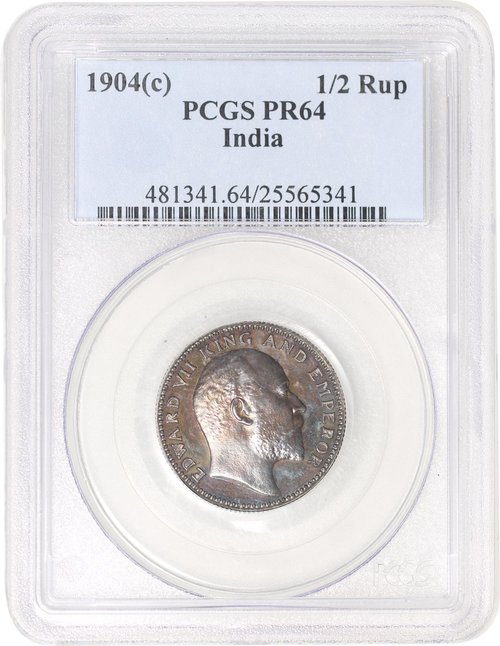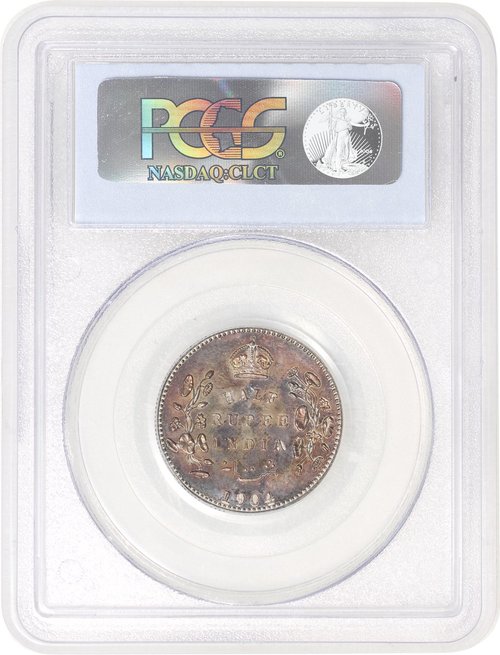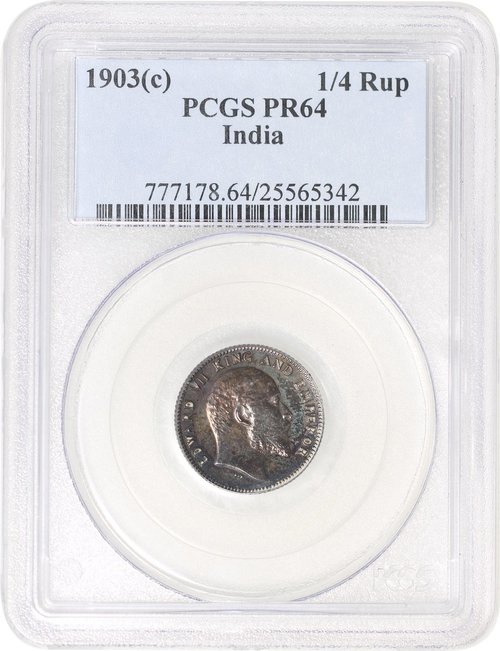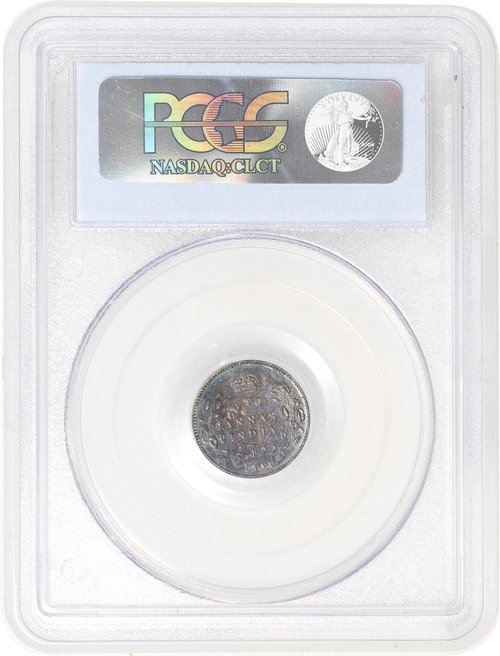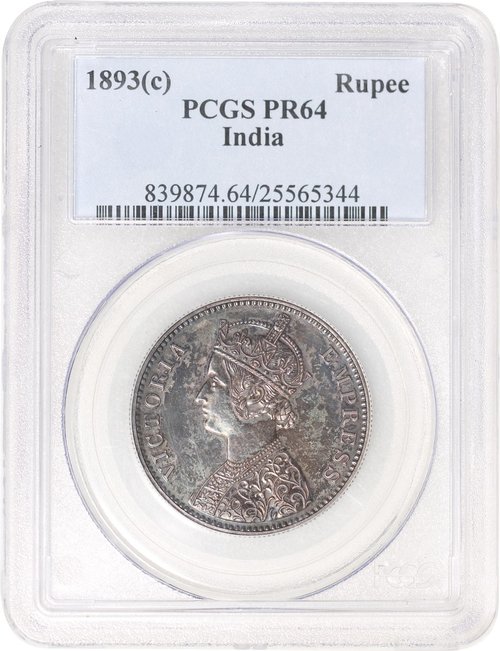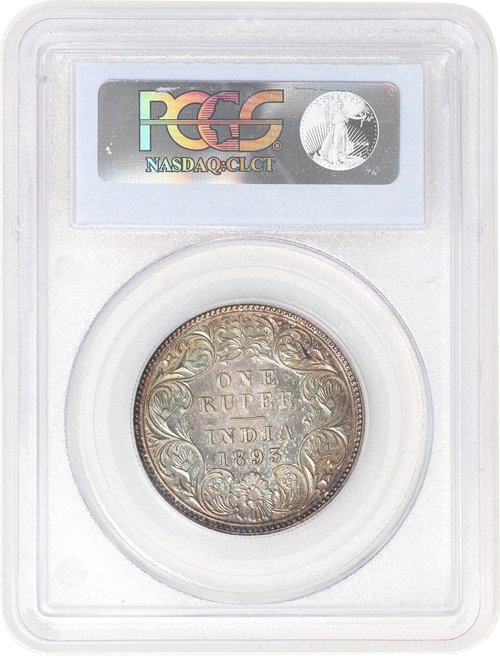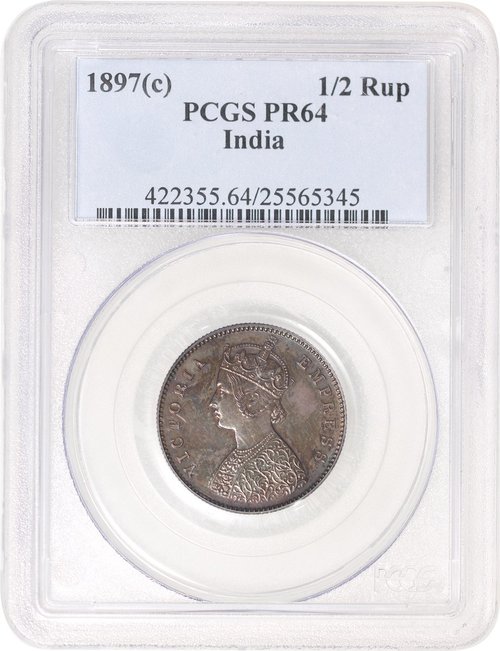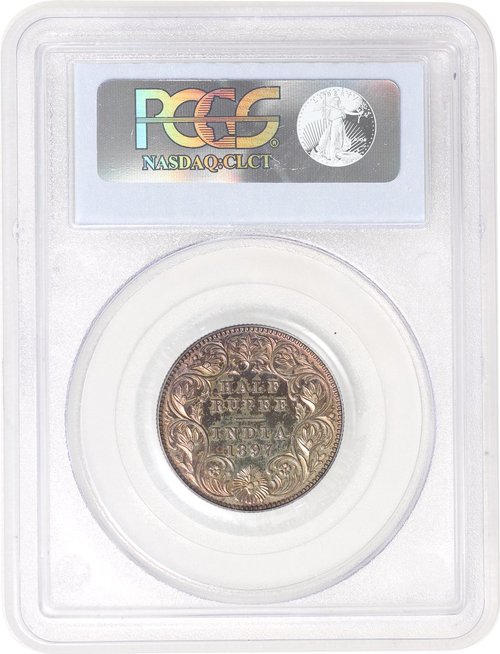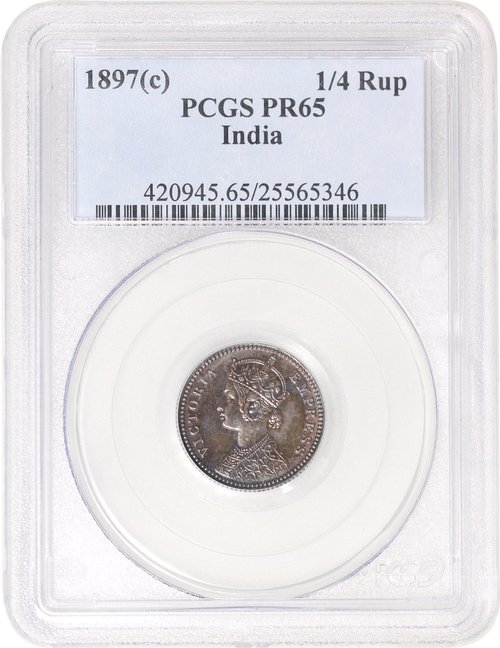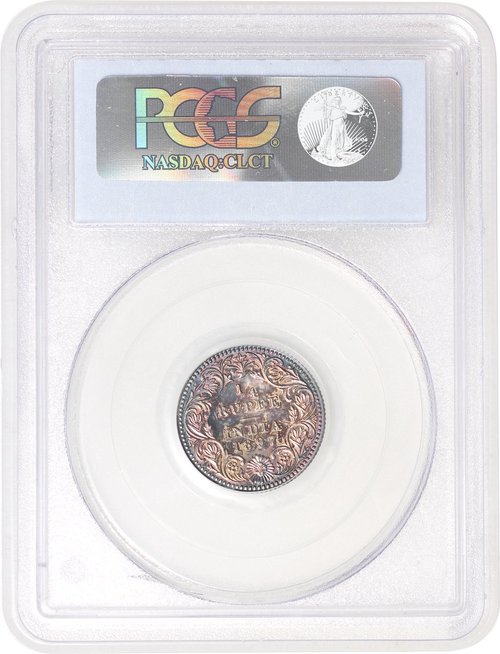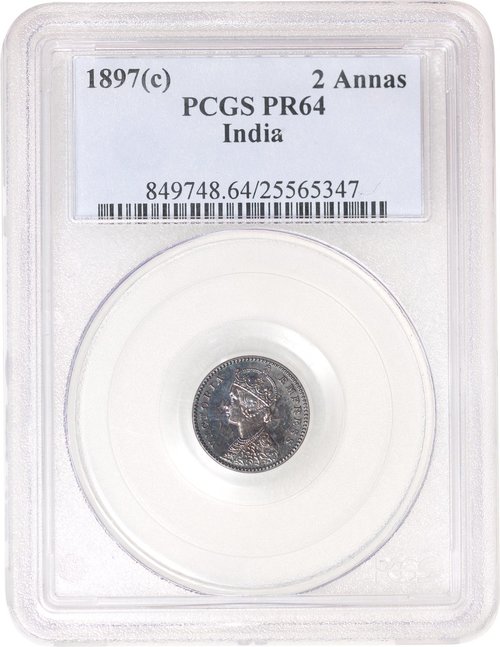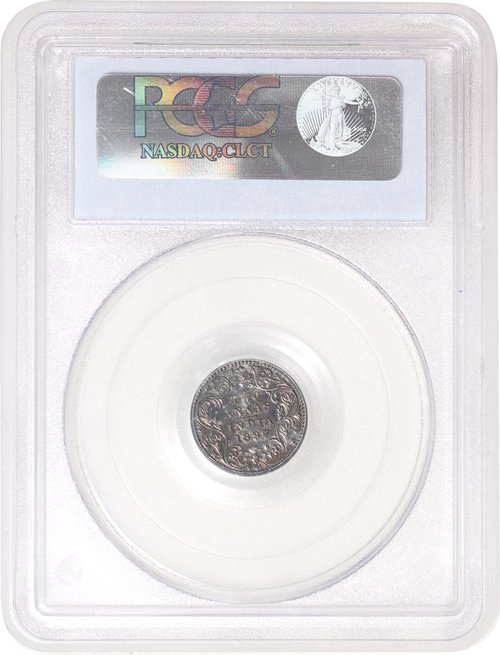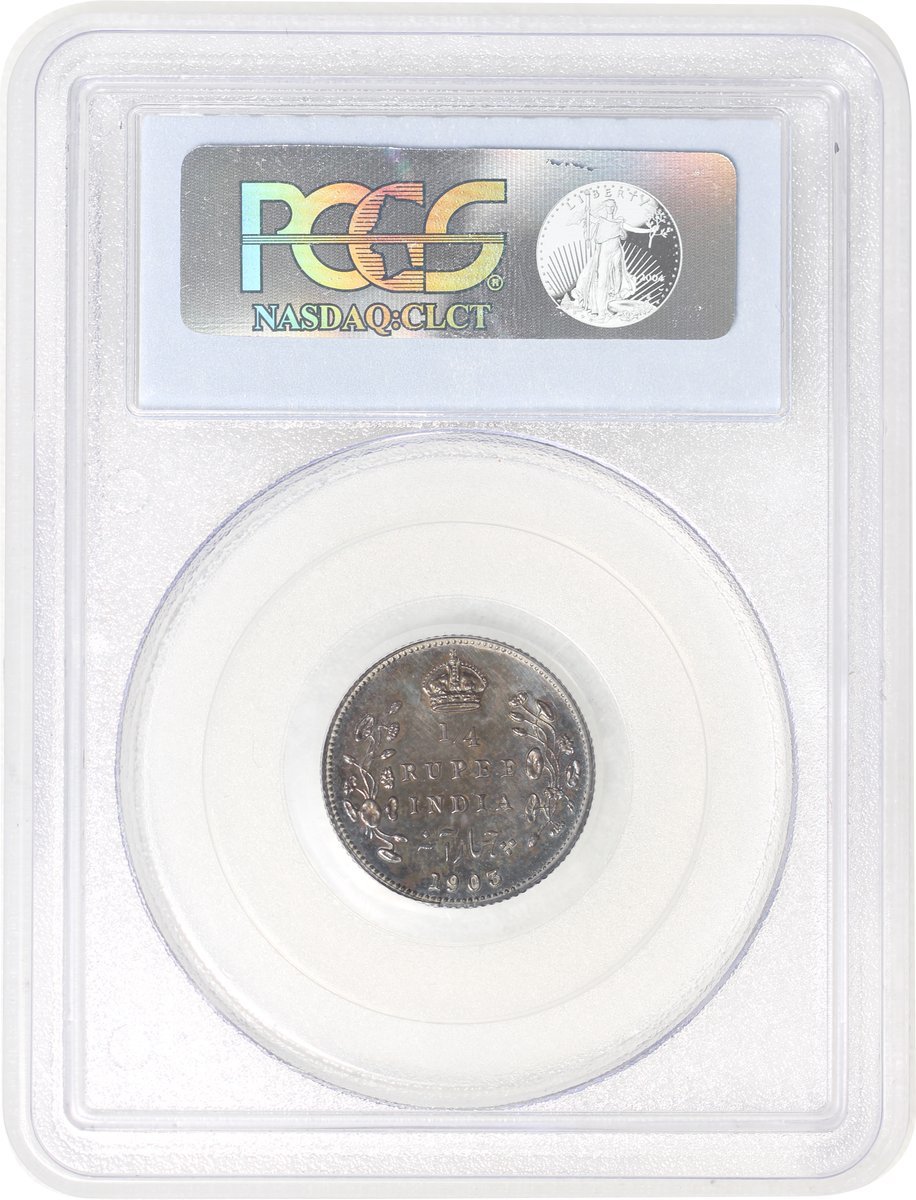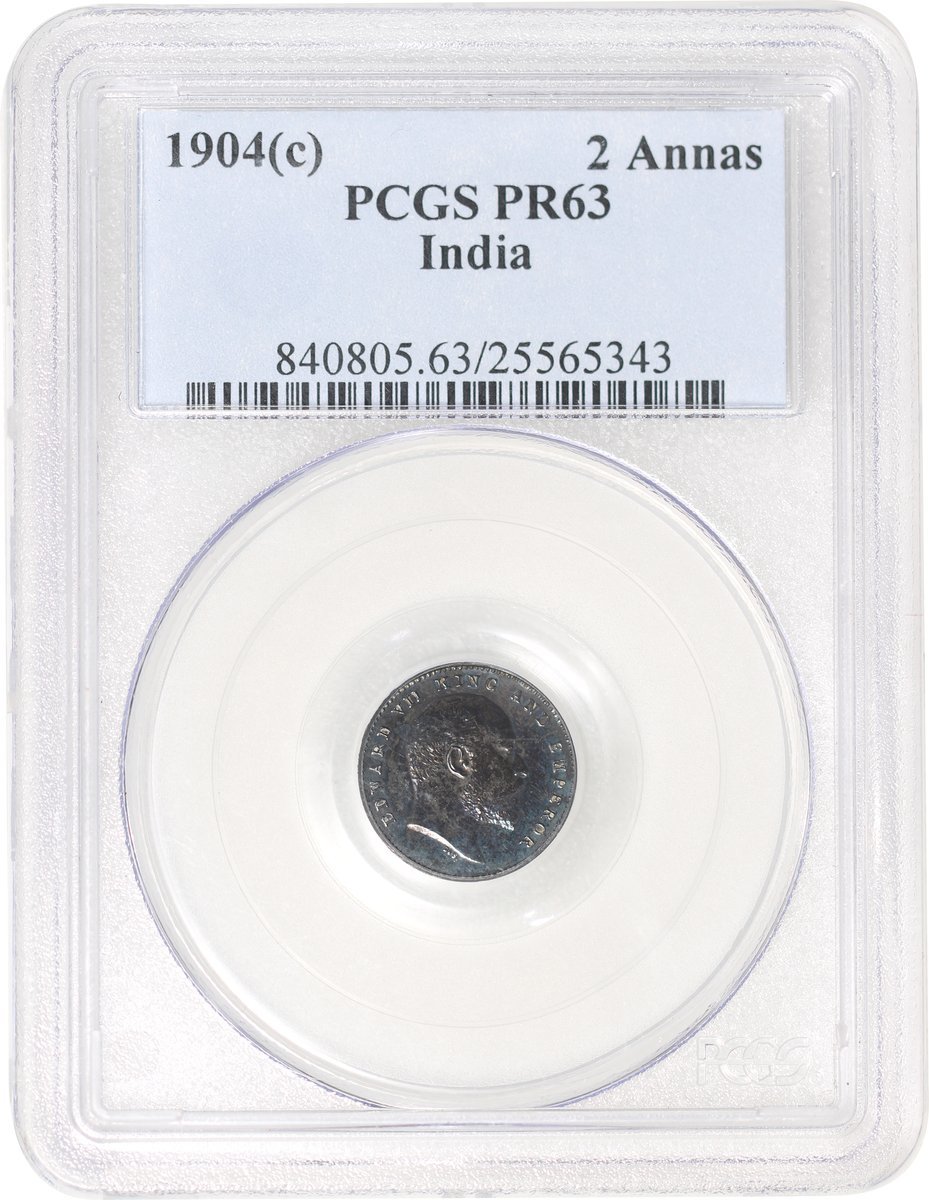Auction: CSS61 - South East Asian Banknotes and Coins
Lot: 6116
British India, The Unique 1904 VIP Presentation Double Proof Set of the silver coinage in official case. All in PCGS holders and graded:
Rupee 1904, graded PR64
1/2 Rupee 1904, graded PR64
1/4 Rupee 1903, graded PR64
2 Anna 1904, graded PR63
Rupee 1893, graded PR64
1/2 Rupee 1897, graded PR64
1/4 Rupee 1897, graded PR65
2 Anna 1897, graded PR64
Previously unrecorded and totally unique (8). Major Fred Pridmore in The Coins of the British Commonwealth Nations, Part 4: India, volume 2: Uniform Coinage makes reference to the then know official proof sets made for British India each was prepared on the instruction of a new coinage. Of these only the 1949 and one 1947 set has been reported in collectors' hands. These are listed on page 199 and comprise the following:
1) 1911 Rupee, ½ rupee, ¼ rupee, 2 annas silver, "Four coins in plush lined case, stamped 'His Majesty's Calcutta Mint".
2) India, 1918, 15 Rupees Gold, "one coin in official case. Bombay Mint."
3) 1919 8 Annas, 4 annas, 2 annas, Anna nickel, "two of each denomination, eight coins in official Calcutta Mint case."
4) 1938, Rupee, ½ Rupee, ¼ Rupee, Anna, ¼ Anna, ½ Pice, 1/12 Anna silver, nickel, bronze. "A set of the first issue of George VI 1938 (seven coins), Calcutta Mint Case."
5) 1947, Rupee, ½ Rupee, ¼ Rupee, 2 Annas, Anna, ½ Anna, Pice, "A set of the last issue of George VI (seven coins) in official Mint case (evidently Bombay Mint)."
This latter listed in the B A Seaby Coin & Medal Bulletin, 1969, p.182.
In addition to these five presentation sets Pridmore lists on page 193 through 198 various India single proof coins, either in the correct metal or otherwise.
However, it can now be seen that an earlier and previously unrecorded set officially struck for a particular reason and unknown to Pridmore has survived and has been in the present collection for some forty years.
In 1904 the Colonial and Foreign Office in London gave instructions that examples of all current colonial coinage be supplied to it. The Indian mints took the instruction to heart, and not only struck proof examples of the coins currently being coined, but in addition prepared dies for denominations still legally in circulation though not at the time being produced.
As a result the copper ½ Anna of 1904, Pr 595, came into existence. This large coin had not been struck for circulation since 1877, though proofs had been made in 1879, 1884, 1890, 1891 and 1893. As no Edward VII coinage ½ Anna had been contemplated, though the coins was still legally current, dies were prepared to show in effect how the coin would look were it being currently struck.
A second piece with a similar background is the Ceylon 5 cents of 1904. The last of the large-size bronze 5 cents had been struck for circulation in 1892, and subsequently a reduced size nickel 5 cents was to be issued years later in 1909. Notwithstanding in 1904 the Indian Mint authorities prepared dies and once again in effect created a coinage that did not actually exist.
An example of the Ceylon 5 cents of 1904 appeared in the sale of the noted collector Jerome "Jerry" Remick, sold at Spink in 2006, where as Lot 231 it brought GBP12,348 (then approximately US$23,090).
While in 1911 and later official VIP presentation proof sets recorded by Pridmore as struck in Indai contained only a single coin or a set of current coins, the undoubted reason for the inclusion of Victorian coins in this discovery set is that in 1904 Victorian coins were still legally current and in circulation in India. In fact in 1904 virtually all the coinage in circulation in India would have been Victorian. Accordingly the Master of the Mint arranged for strikings to be made from (repolished) Victorian dies as well as from the current specially prepared Edward VII dies.
1904 was to see regular coinages by both Calcutta and Bombay. However, no coinage of ½ Rupee by either mint, nor ¼ Rupees of the Calcutta Mint, nor 2 Annas of Calcutta were to be struck in 1904.
Interestingly, on the Indian Government Mint Bombay price list of specimen coins available for restriking the ½ Rupee of 1904 is listed as being available. Quite possibly these were to be struck from dies that came into existence to create the ½ Rupee denomination of 1904 for inclusion in the present set.
The short reign of Edward VII was marked by a number of design and metal changes, as seen in the large number of patterns proposed during his reign. Accordingly, it may have been due to the series of patterns and trial commencing in 1903 and reaching a peak in 1904-1905 that the Colonial Office requested a set of the 'current' pieces with which to make comparisons to any new proposals.
Please go to the auction description of the sale and follow the link there to see the coin rotational videos and Pridmore scans.
Estimate
HK$300,000 to HK$400,000
Starting price
HK$300000

